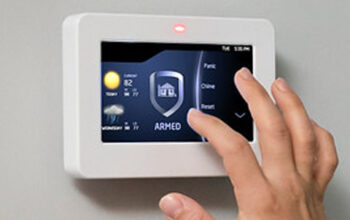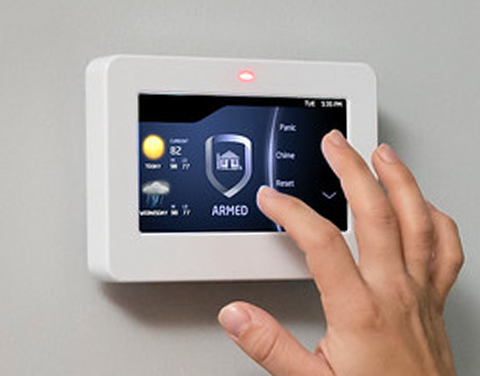In the dynamic realm of construction, innovation is the driving force behind efficiency and progress. Hydraulic breakers, indispensable tools in demolition and excavation, have witnessed remarkable advancements in recent years. Large-range breakers stand out among these breakthroughs, offering unparalleled power and versatility. In this blog post, we delve into the latest features and technologies shaping the landscape of hydraulic breakers, focusing on the remarkable capabilities of large-range breakers.
Power and Precision
Large-range breakers are characterised by their formidable power, allowing them to quickly demolish the most challenging materials. These breakers use advanced hydraulic systems to deliver precise and controlled force, minimising collateral damage and maximising efficiency. Innovative features such as auto-power adjustment and variable blow frequency ensure optimal performance across various applications, from concrete demolition to rock excavation.
Durability and Reliability
Durability is paramount in the demanding environment of construction sites. Large range breakers are engineered with robust materials and cutting-edge technologies to withstand the rigours of heavy-duty usage. Reinforced housing, hardened steel components, and advanced cooling systems ensure longevity and reliability, minimising downtime and maintenance costs. Whether tackling massive infrastructure projects or intricate demolition tasks, these breakers provide unwavering performance day in and day out.
Enhanced Safety and Ergonomics
Safety is a top priority in any construction operation, and extensive range breakers are designed with this principle in mind. Integrated safety features such as overload protection and shock absorption mechanisms prioritise operator safety, reducing the risk of accidents and injuries. Furthermore, ergonomic designs and intuitive controls enhance operator comfort and productivity, enabling prolonged operation without fatigue. With a focus on performance and safety, these breakers empower construction professionals to work confidently and efficiently.
Smart Technologies and Connectivity
Innovative technologies have revolutionised hydraulic breakers’ functionality, and an extensive range of models are at the forefront of this innovation. Built-in sensors and monitoring systems provide real-time data on performance metrics such as impact force, operating temperature, and maintenance intervals. Remote monitoring and diagnostics enable proactive maintenance scheduling, minimising downtime and optimising equipment lifespan. Moreover, connectivity features allow seamless integration with telematics platforms, enabling fleet management and performance tracking for enhanced operational efficiency.
Environmental Sustainability
In today’s environmentally conscious world, sustainability is crucial in construction practices. Large-range breakers are engineered with eco-friendly features to reduce carbon emissions and minimise environmental impact. Advanced hydraulic systems optimise energy efficiency, ensuring maximum power output with minimal fuel consumption. Noise reduction technologies mitigate sound pollution, making these breakers ideal for urban environments and sensitive construction sites. Additionally, recyclable materials and eco-friendly lubricants further contribute to the sustainability credentials of breakers, aligning with the industry’s commitment to greener practices.
Adaptability to Varied Conditions
Large-range breakers excel in versatility, adapting to various operating conditions and materials. Whether breaking through reinforced concrete, demolishing asphalt pavements, or excavating rocky terrain, these breakers offer unparalleled performance across diverse applications. Modular designs and interchangeable tooling systems enable quick adaptation to different tasks, minimising downtime and maximising productivity. Furthermore, advanced hydraulic controls allow operators to fine-tune parameters such as impact force and blow frequency, optimising performance for specific materials and operating conditions. With their adaptability and versatility, breakers are indispensable tools for modern construction projects of any scale.
Integration with Automation and Robotics
Integrating automation and robotics is transforming the landscape of construction equipment, and hydraulic breakers are no exception. Large-range breakers can be seamlessly integrated with automated demolition and excavation systems, enhancing precision, efficiency, and safety. Autonomous control features enable uncrewed operation in hazardous environments or inaccessible areas, reducing human exposure to risk. Furthermore, robotics-assisted demolition techniques optimise breakers, maximising productivity while minimising waste and environmental impact. By embracing automation and robotics, construction companies can streamline operations, improve project timelines, and achieve higher levels of efficiency and safety.
Future Trends and Innovations
As technology continues to evolve, the future of hydraulic breakers holds exciting possibilities. Emerging trends such as electrification and hybridisation are reshaping the design and functionality of large range breakers, offering potential benefits regarding reduced emissions and increased energy efficiency. Advanced materials and manufacturing techniques enable lighter yet stronger breaker designs, enhancing portability and manoeuvrability without compromising performance. Moreover, artificial intelligence and machine learning algorithms are being integrated into hydraulic breaker systems, enabling predictive maintenance and adaptive control capabilities for optimised performance and longevity. With these ongoing advancements, breakers are poised to remain indispensable tools in the construction industry, driving efficiency, safety, and sustainability to new heights.
Collaboration and Industry Partnerships
Innovation thrives on collaboration, and the development of hydraulic breakers is no exception. Industry partnerships between manufacturers, construction companies, and technology providers are pivotal in driving innovation and pushing the boundaries of what is possible. Collaborative research and development efforts enable sharing of expertise, resources, and best practices, accelerating innovation and ensuring that hydraulic breakers remain at the forefront of technological advancement. By fostering a culture of collaboration and partnership, the industry can collectively address challenges, seize opportunities, and shape the future of hydraulic breakers for years to come.
Conclusion
Innovation is the cornerstone of progress, and the evolution of hydraulic breakers exemplifies this principle. Large-range breakers, with their unmatched power, durability, and safety features, represent the pinnacle of engineering excellence in the construction industry. As technology advances, we can expect even more significant breakthroughs in hydraulic breaker design, further enhancing efficiency, safety, and sustainability in construction operations. By embracing these innovations, construction professionals can unlock new levels of productivity and performance, driving the industry into a future of endless possibilities.










